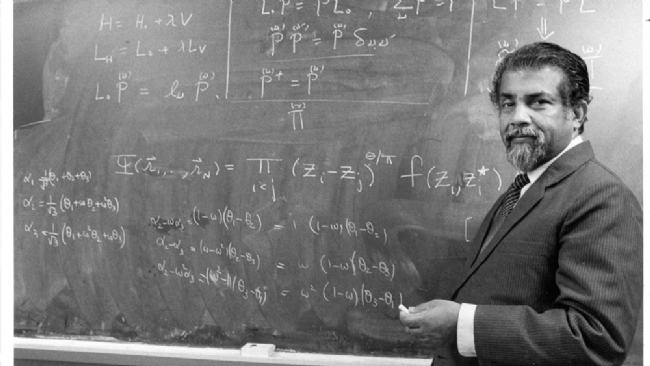Born in a Christian family in Kerala, EC George Sudarshan considered himself a ‘Hindu Vedantin’. Credited with numerous contributions to the field of Theoretical Physics, Sudharshan was well-known for his efforts to synthesise Vedanta and modern science.
Renowned physicist and the propounder of the V-A Theory, Dr Ennackal Chandy George Sudarshan aka E C G Sudarshan passed away in Texas on May 14. Along with American physicist Robert Marshak, Dr Sudarshan founded the V-A Theory of the weak force. He has also been credited with many other significant contributions to physics including Tachyons, Quantum Zeno Effect, Open Quantum System, Spin-statistics Theorem, Non-Invariance Groups, Positive Maps of Density Matrices and Quantum Computation, among others. He was a professor at the University of Texas.
Born in a Syrian Christian family in Kerala, in 1931, Dr Sudarshan graduated from the Madras Christian College and did his postgraduation from the University of Madras. During his stint in the Tata Institute of Fundamental Research (TIFR), Sudarshan got a rare opportunity to work with many eminent scientists, including Homi Bhabha, father of the Indian nuclear programme.
Finding parallels between Hindu knowledge tradition and modern science, Sudarshan left Christianity and embraced the Hindu way of life. He considered himself a ‘Vedantin Hindu’. He never hid his disagreements with the Church’s view of God. He used to recite Gayatri Mantra and Vishnu Bhujanga Prayata every day, as he said in an interview published in a Malayalam Weekly long back.
Answering to a question about science and spirituality, in an interview published in The Hindu on January 24, 2013, Dr Sudarshan explained his efforts to synthesise Vedanta and modern science. “There are certain fundamental questions in physics for which there are no clear-cut answers. For example, what is time? I breathe. I can count the number of times I do that. Can we call those intervals as time? Suppose I stop breathing, does time seize to exist? Einstein’s special theory of relativity interprets time as a subjective experience. The notion of time could be different for different people. Once you bring subjective experience into the picture, science finds close parallels with Indian philosophy. The Upanishads go to great depths on topics of space, time the nature of causality and such. Unlike science, the analysis found in the Upanishads is entirely from an inside point of view. I find that approach reasonable and a lot refreshing,” he said.
He had been denied Nobel Prize several times even though his contributions were recognised by the Nobel Committee. In 2005, a group of scientists wrote to the Swedish Academy saying that Sudarshan should have awarded the Nobel Prize along with Roy J Glauber, who received it for the Sudarshan–Glauber representation. Sudarshan had also said in an interview that the 1979 Nobel went to Steven Weinberg, Sheldon Glashow and Abdus Salam built on a work that he had done as a young student. Considering his invaluable contributions to the nation and the world, the Government of India honoured him with Padma Vibhushan in 2007.

